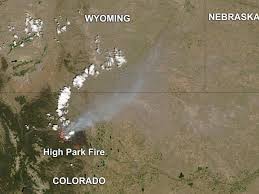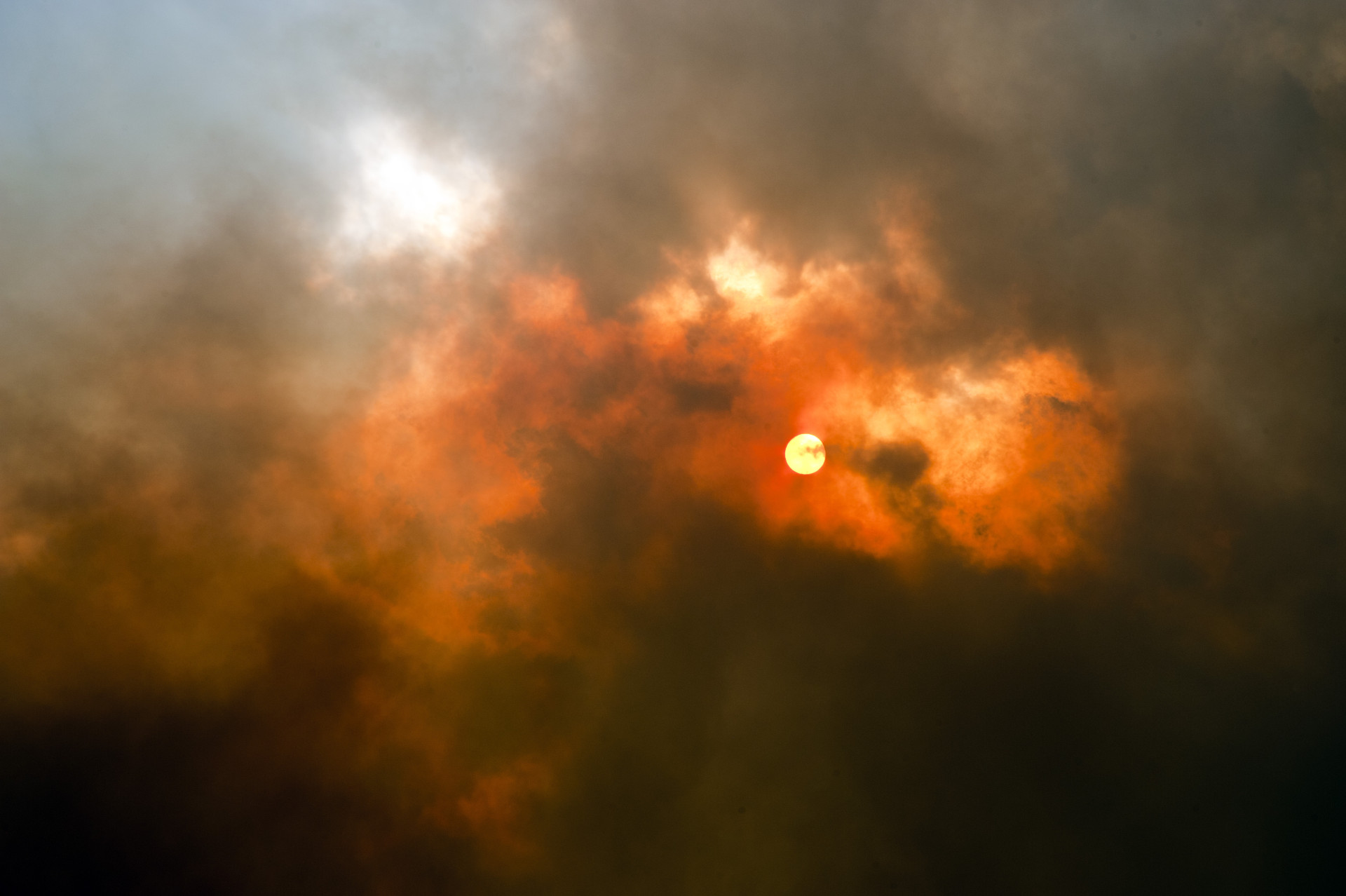In 2012, the High Park Fire ripped through the mountains west of Fort Collins, charring 87,284 acres and hundreds of homes. Smoke from the fire permeated Colorado’s Front Range and neighboring states for weeks, forcing millions to breathe particulate-laden air.
Researchers at Colorado State University have received a $1.2 million NASA grant to study the public health toll from inhaling such dense wildfire smoke and build an improved air quality forecasting system.
“We are developing a tool that officials can use to evaluate where wildfire smoke will travel and how bad it is expected to be so they can warn people ahead of time,” said Jeff Pierce, an assistant professor of in the Department of Atmospheric Science[1] who is leading the project.
Other team members include Emily Fischer, assistant professor of atmospheric science, Sheryl Magzamen, assistant professor of environmental and radiological health science[2], and John Volckens, associate professor of mechanical engineering[3]. The researchers came together as part of the School of Global Environmental Sustainability Global Challenges Research Team[4] program, which provides funding and other support for interdisciplinary projects.
Long-term health risks?
Exposure to wildfire smoke has been associated with a suite of negative health effects. Many of those subjected to smoke for even a day or two have reported increased eye irritation and respiratory symptoms.
But little is known about the long-term health risks and impacts of being exposed to smoke filled with fine particles and potentially toxic gasses.
“No one is sure about the public health impacts from exposure to wildfire smoke,” said Volckens, the director of the Center for Energy Development and Health [5]at the CSU Energy Institute. “We have a lot of anecdotal information, but not a lot of hard data. We need to gather data from several fire episodes to improve our understanding of the health risks from inhaling wildfire smoke.”
Mike Van Dyke with the Colorado Department of Public Health and Environment[6] agrees. He said wildfires are a critical public health concern, which is why the agency is working with CSU on the project.
“We are excited to partner with CSU to help develop improved wildfire smoke forecasting models that could be used in these emergencies to help inform our citizens and prevent adverse health issues,” he said.
Mining records for data
CSU researchers will comb through hospital records and other data logged during High Park and two other Colorado wildfires to determine – If there were more incidents of respiratory and other health-related problems reported during wildfires? If so, what kind? And were certain populations –the elderly and/or those with asthma, for example – more affected than others?
The team will then evaluate that information against satellite images, weather and atmospheric data from those same fires and time periods. The goal is to better understand how the smoke travelled and pinpoint which areas were exposed to different smoke levels and for how long.
“We can compare information and see at what point this smoke starts impacting public health,” Volckens said.
Better models needed
During the second phase of the study, the team will evaluate two existing air quality/fire emission models to see if they can be adapted to forecast the path smoke from a wildfire will take and which areas or regions could be subjected to the most polluted – and potentially hazardous — air.
“Right now, there is a lot of uncertainty in the current models used,” Pierce said. “We want to improve them.”
Volckens agreed, saying people need time to plan and protect themselves.
“A big wildfire like High Park can turn the relatively pristine Front Range air into Beijing in less than 24 hours,” he said.
A hazy future
The need for an air quality warning system for wildfires is only going to grow in coming years. Climate models predict that Colorado and other western states will become more arid and more prone to wildfires. A 2009 study[7] published in the Journal of Geophysical Research estimates the number of wildfires in the western United States will grow more than 50 percent by the 2050s.
“Our best guess is that we are going to see more wildfires that are much bigger in size,” Pierce said. “We need to be prepared.”

